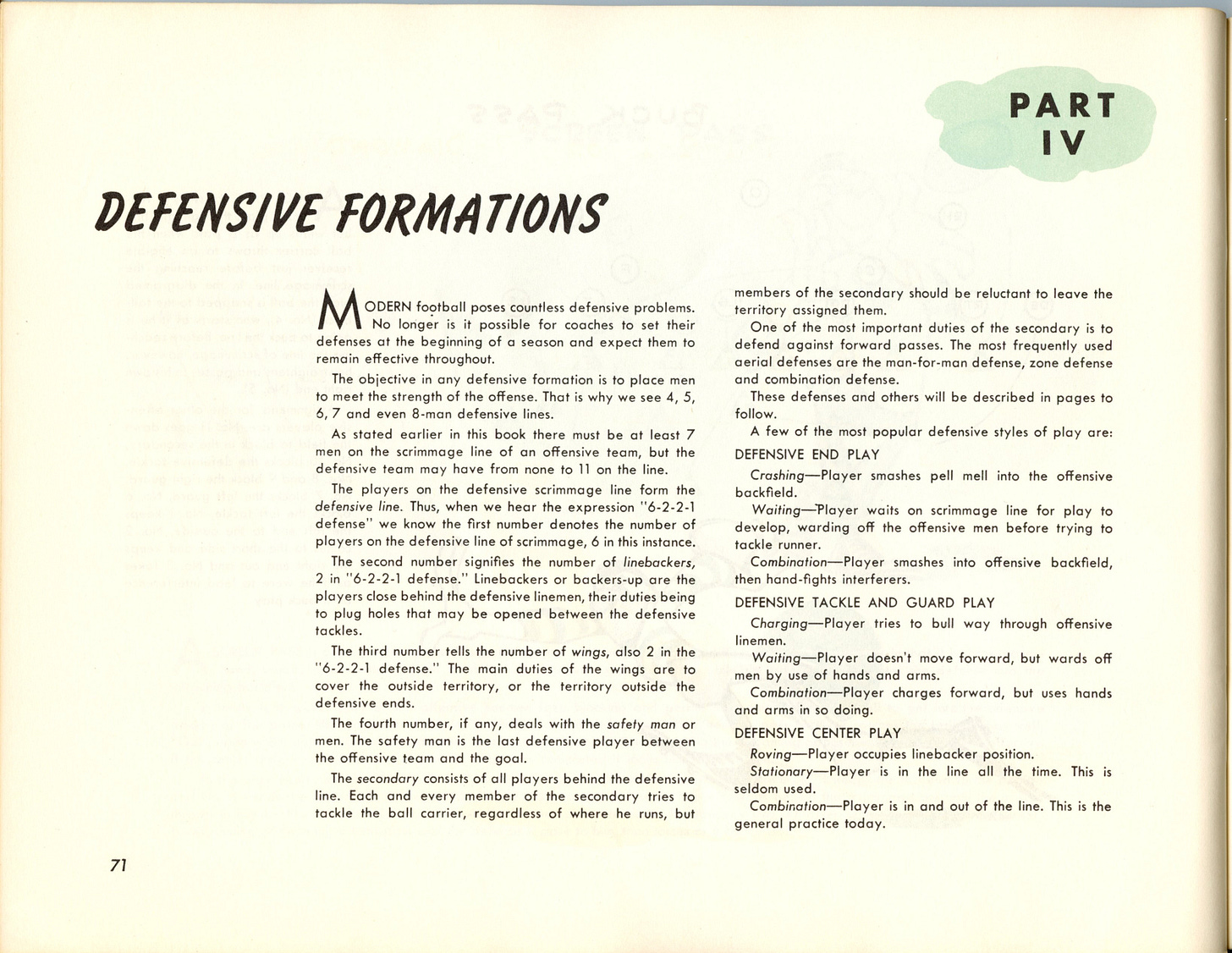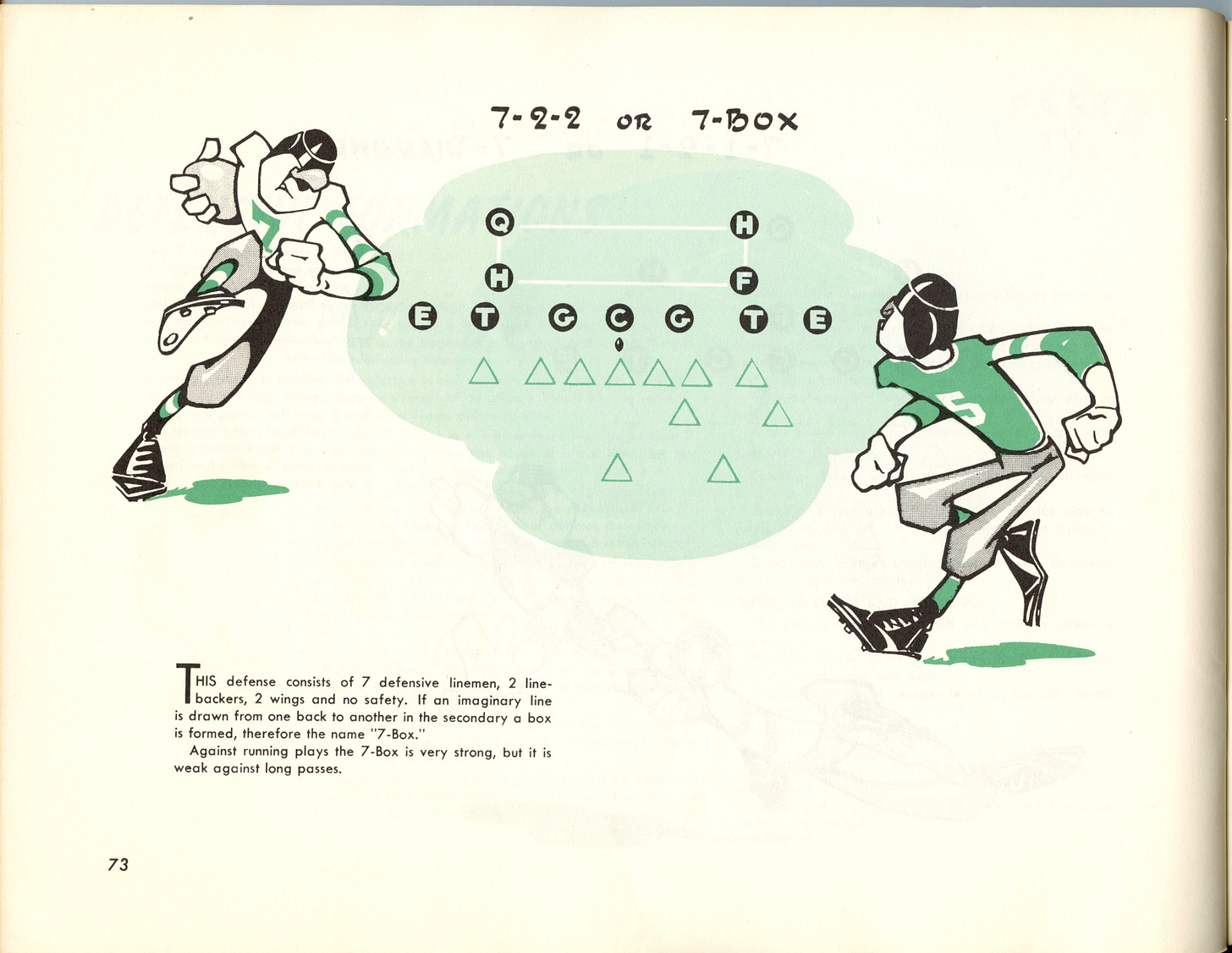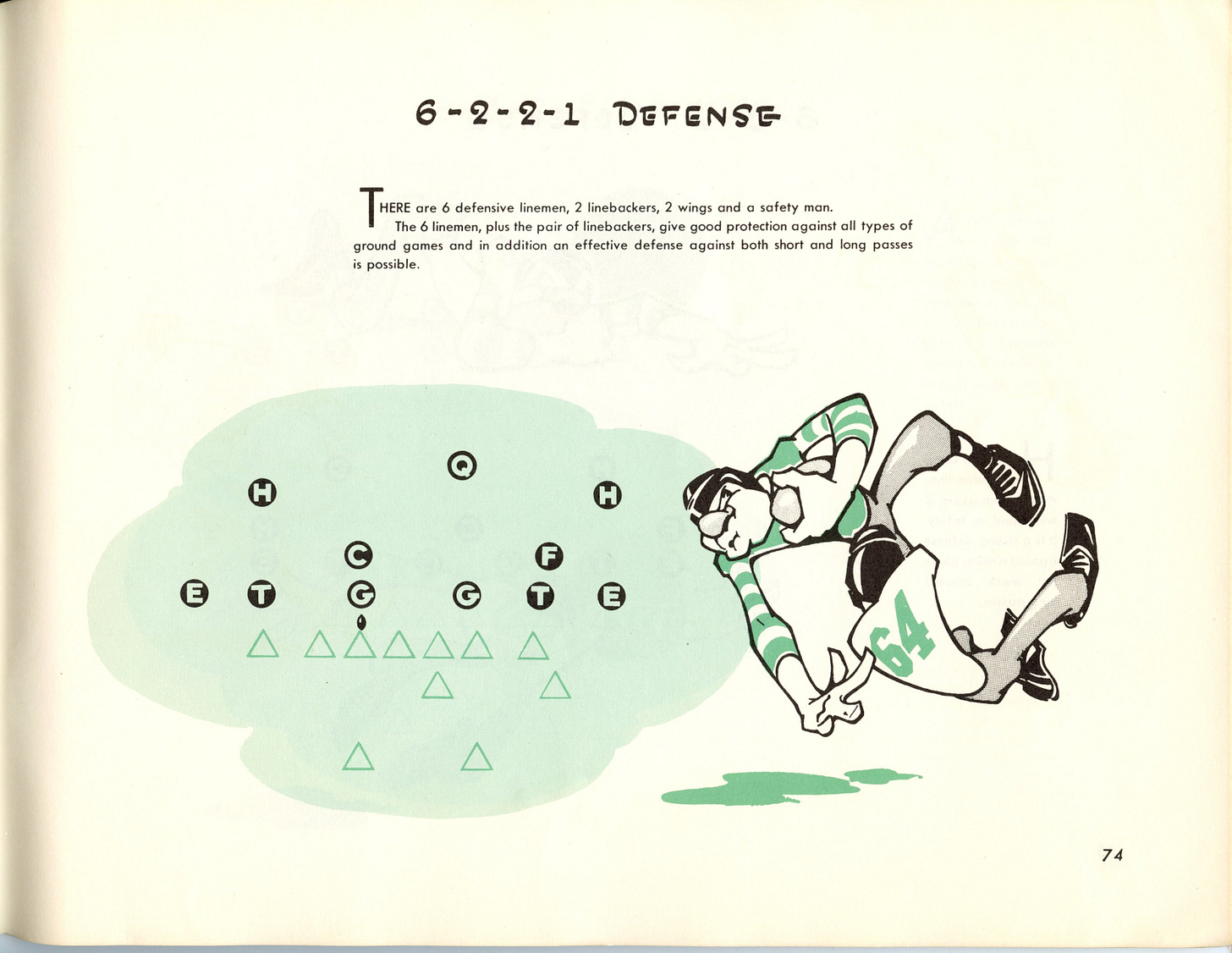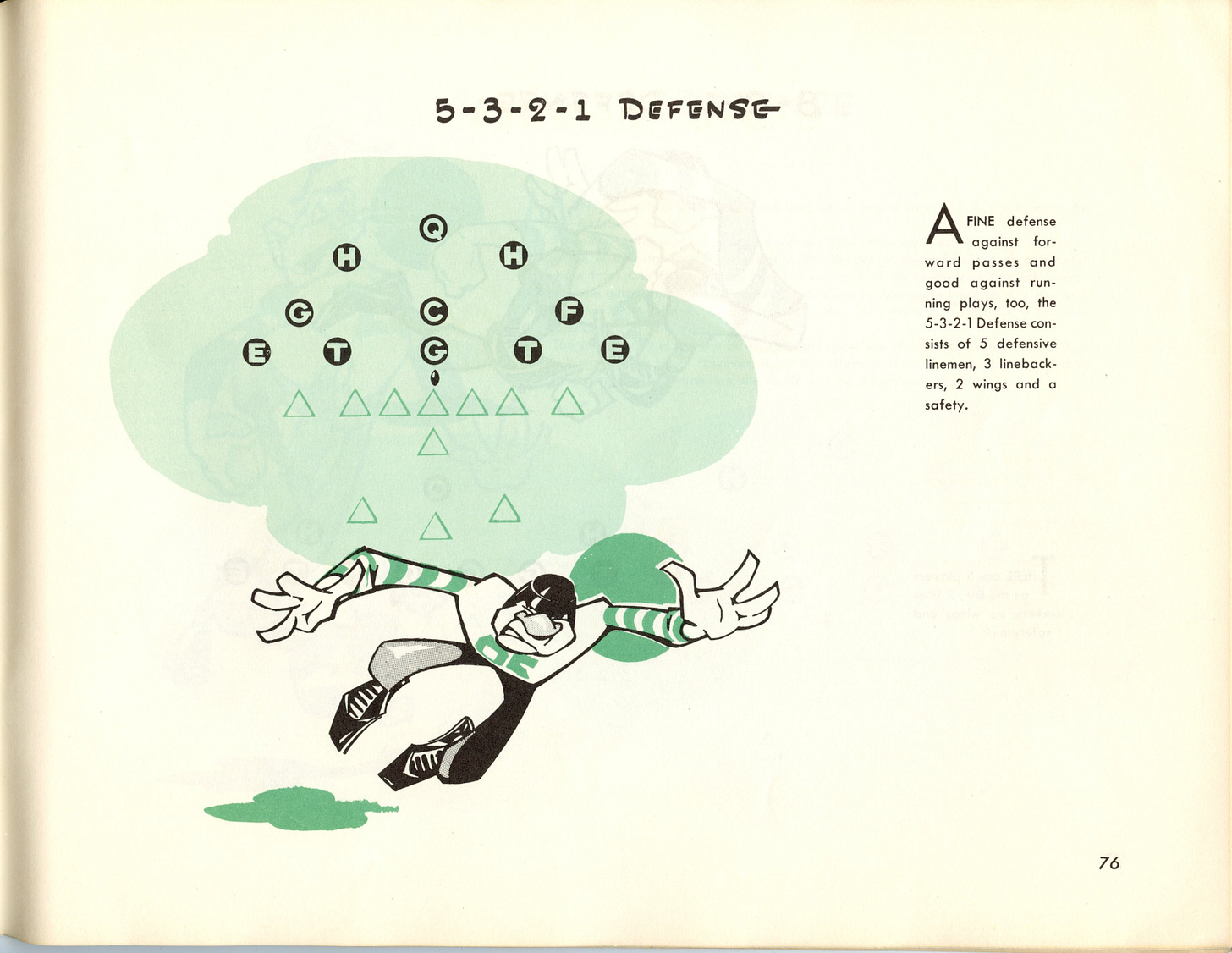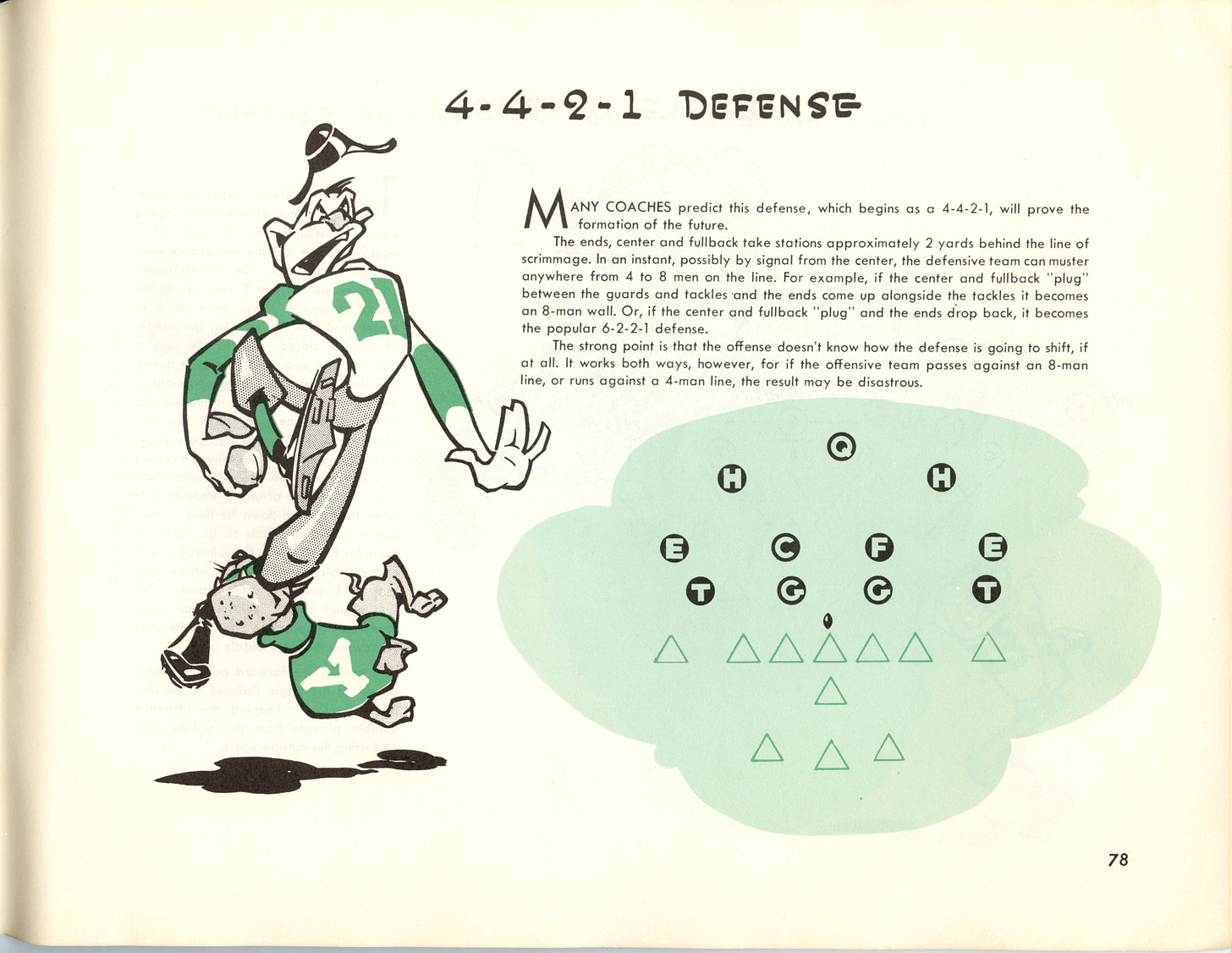Today's Tidbit... Defenses of 1947 or 1955
This is the fifth in a series concerning Everybody's Football, a Massachusetts Mutual Life advertising premium from 1955. The book explains various elements of the game as it existed at that time. Previous stories from the series include:
The best offense is a good defense, or the other way around. Anyway, we turn to the defensive side of the ball today with a look at six defensive formations. Then, we'll look at two more modern defenses and pass coverage after that, before wrapping up with a look at officiating.
The page introducing the defensive alignment is straightforward in that it describes the defensive numbering convention, but it includes a few period terms worth mentioning. It calls linebackers, linebackers, but also throws in the old backers-up term for good measure. Behind the linebackers are wings and safeties; wings being akin to cornerbacks today.
The progression of defenses that follows illustrates how defenses transitioned from being run-focused to having to defend the pass. In turn, offenses had to adapt to the defensive changes.
8-2-1
The 8-2-1 or something similar is still played today on the goal line, but it was one of football's primary defenses before the forward pass. It stuck around for a while since some teams seldom threw the ball.
7-1-2-1 or 7 Diamond
The 7 Diamond gets its name from the shape formed by the secondary (everyone behind the defensive line), while the defensive line aligns opposite their offensive position or slightly wider. When facing the Single Wing or a similar unbalanced offense, the defense shifts slightly to the strong side of the offensive formation.
7-2-2 or 7 Box
The 7 Box also gets its name from the alignment of the secondary. The description says it is strong against the run, but it looks vulnerable up the middle to me.
6-2-2-1 and 6-3-2
As offenses began throwing the ball, defenses began shifting the center off the defensive line and into a roving center or linebacker role.
5-3-2-1
The continued use of the forward pass led to another player shifting off the defensive line, and moved one level back to allow him to flow to the play.
4-4-2-1
The transition continued to four-man defensive lines. The description tells us the 4-4 is effective against the pass, but then spends time discussing stunts into 8- or 6-man lines, which suggests they remained focused on stopping the run.
The arrival of five- and four-man lines marked a shift in defenses, as they created planned stunts and blitzes, which were no longer necessary when the defense covered each offensive lineman. In turn, with stunts and blitzes making the post-snap location of defenses less predictable, offensive lines adopted area rather than man blocking schemes for run blocking and cup protection when pass blocking.
We'll cover another, more modern, defensive scheme tomorrow, along with the basics of pass coverage in the secondary.
As before, enjoy Ted Drake's illustrations.
Football Archaeology is reader-supported. Click here to donate a couple of bucks, buy one of my books, or otherwise support the site.


